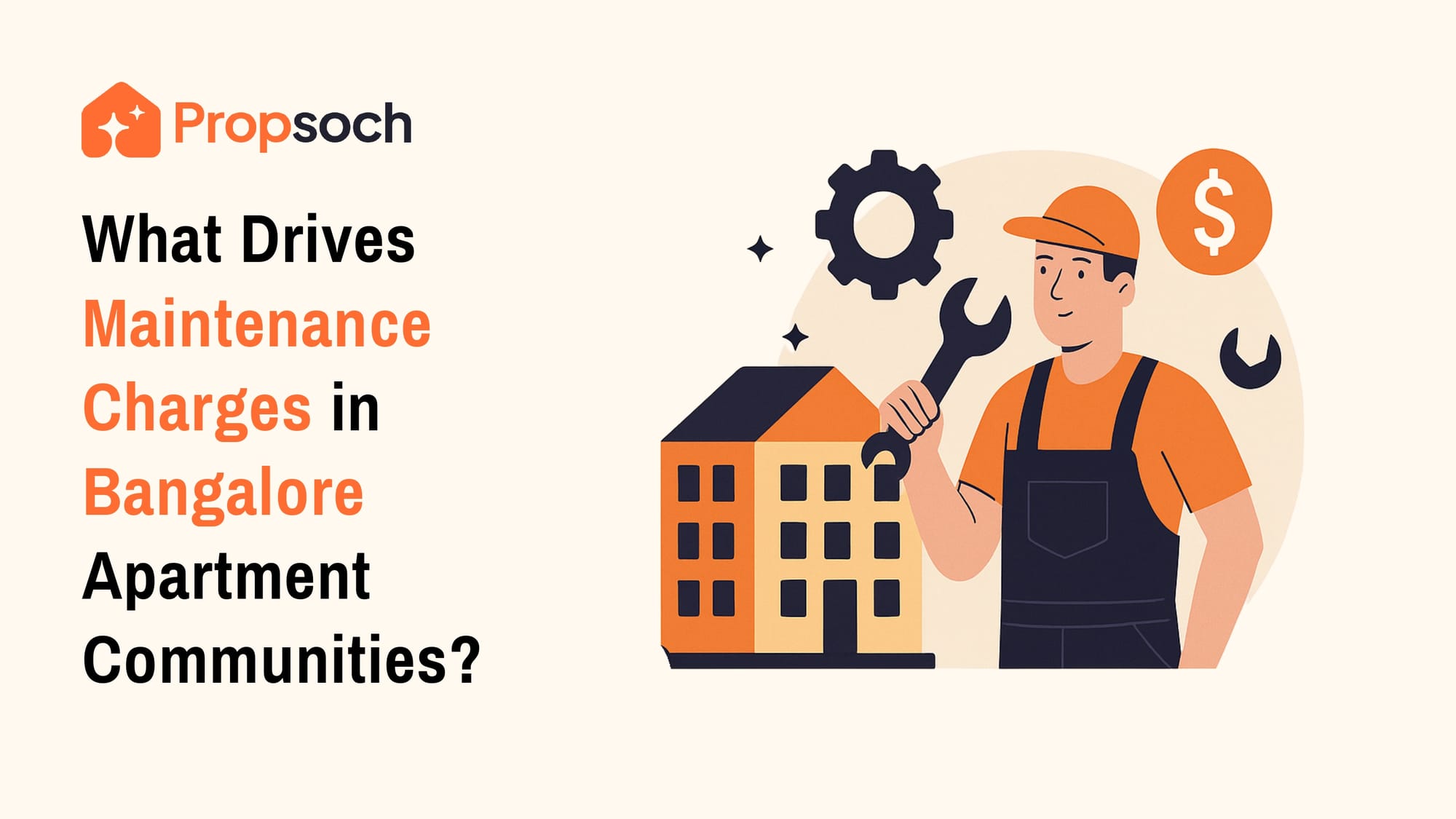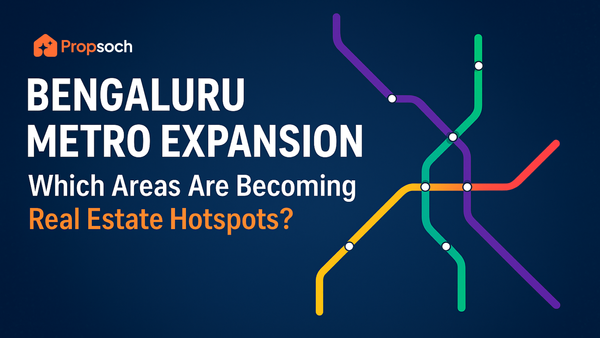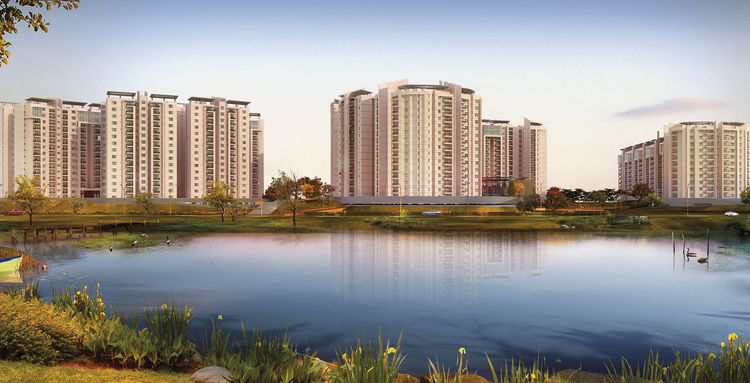When buyers begin their homeownership journey, the conversation usually revolves around three key things: price per square foot, loan eligibility and builder reputation. These factors are undoubtedly important but there’s one critical question that often gets overlooked: “what will it actually cost to live here every month?”
Among the many recurring costs, monthly maintenance charges are one of the most overlooked and least understood in the process. Many buyers walk into possession without a clear idea of what they’ll be paying, only to be surprised six months later when they find themselves shelling out ₹10,000 or more every month just for upkeep.
In fact, based on our research, projects being delivered three years later are already collecting ₹1.57/sqft more, a 36% increase in maintenance charges. That’s a significant jump and one that can impact your long-term affordability.
At Propsoch, we’ve heard homebuyers say, “I thought gated community life meant everything was included,” or “I never expected maintenance to eat into my monthly budget like this.”
So this blog is here to clear all the confusion. We'll dive deep into what drives maintenance charges, how they vary depending on project size, developer grade, year of possession and what that actually means for your long-term financial planning. Our expert analysis is based on over 30 apartment projects across Bangalore, carefully selected to cover a mix of developer profiles, community scale and handover timelines.
If you've ever wondered what you’re actually paying for each month and how much those costs are likely to grow, then this guide is for you. Let’s break down what really influences the per-square-foot maintenance charges in Bangalore’s residential communities.
How Developer-Led Maintenance Works
Developers typically collect advanced maintenance at the time of possession, which is usually for 1 to 3 years to cover:
- Common area upkeep
- Security & housekeeping
- Power backup & water systems
- Facility management (clubhouse, pools, etc.)
- Minor repairs and consumables
Maintenance charges are typically collected monthly, quarterly, or annually, depending on the community’s setup. After the RWA is formed, these funds are managed by the elected committee, which handles budgeting, vendor payments, and service quality. Importantly, if monthly maintenance exceeds ₹7,500 per flat, it attracts 18% GST, making a noticeable difference in premium communities.
Today, these charges are often advertised at ₹4.5/sqft/month on average and can seem quite reasonable at first glance. But this early pricing doesn’t always reflect the true cost of running a residential community sustainably over time.
Where Does Your Maintenance Money Go?
The largest cost components in residential maintenance are typically driven by manpower and utilities.
Understanding Maintenance, Corpus, and Sinking Fund
When you buy an apartment, you're not just paying for the home itself — you're also contributing to a range of shared funds that keep the community running smoothly. It's important to understand the difference between monthly maintenance charges, the one-time corpus fund, and the periodic sinking fund.
Regression Analysis: What Actually Affects Maintenance Charges
To understand the factors that influence maintenance charges the most, we ran a correlation matrix, a visual map showing how strongly each project variable is linked to maintenance costs. In this chart, darker shades indicate stronger relationships.
You’ll notice that developer grade and project possession year have the strongest correlations with maintenance charges. Grade A developers (often offering premium services) tend to charge more while newer possession years align with higher rates due to inflation and upgraded amenities.
Factors Influencing Maintenance Charges
Through regression analysis, we found that two key factors significantly affect maintenance charges are:
- Possession Year: Newer projects charge more likely due to enhanced facilities, increased costs, and inflation.
That’s a ₹1.57/sqft increase, which is ~36% increase in maintenance charges.
For example, if we consider a 2000 sq ft apartment, with possession from 2028 onwards
- 2023-2025 price - 8620 x 12 = ₹ 1,03,440
- 2028-2032 price - 11,760 x 12 = 1,41,120
That means, you'll end up ₹37,700/year more for the same home, simply because you're buying it in a later phase (2028 onwards)
- Developer Grade: Grade A developers charge higher but offer better planning and continuity. Grade B & C developers start lower but costs may spike later due to inefficiencies like poor construction quality, lack of energy-efficient fittings leading to high electricity bills in common areas, and inadequate power infrastructure causes DG overuse.
Key Takeaway: If we compare in percentage, we can see a significant increase across the A, B and C grade developers.
What Happens After the Advance Period Ends?
Once the advance maintenance term expires, the real picture emerges. Here's what typically changes:
- Costs rise by 15–25% in most projects we studied
- RWAs or third-party agencies take over, often revising outdated budgets- hidden costs surface, like AMC renewals, staff replacements, and increased utility bills
Key Insight: Developer pricing in the early years is often conservative, driven by a desire to keep initial cost of ownership attractive. After handover, actual costs usually increase as the community grows into full occupancy and faces real-world wear and tear.
When is the RWA formed?
A Resident Welfare Association (RWA) is typically formed after a substantial number of residents have taken possession in a housing project, often once 50% or more of the units are occupied.
Under the RERA Act, developers are legally obligated to initiate the formation of an RWA within three months of handing over 50% of the units. Initially, the builder manages maintenance through in-house teams or facility management agencies. However, as the community grows, residents often prefer to take control of day-to-day operations, budgets, and service quality. At this point, they form an ad hoc committee and proceed to register the RWA under legal frameworks like the Societies Registration Act or Karnataka Apartment Ownership Act (KAOA).
Key Takeaways for Homebuyers
If you’re buying a new home directly from a developer:
- Ask for the breakup of the advance maintenance amount.
- Don’t assume it’ll stay the same after possession.
- Check developer’s track record in post-handover management.
- Compare charges with similar projects in your area.
- Plan ahead for a 15–25% increase in monthly outflow over the next few years.
Final Thoughts
While the initial purchase price often takes centre stage, it’s the ongoing costs of living in a community that truly shape your long-term experience. As residential societies grow in size and complexity, so do the demands of maintaining them - from enhanced amenities and rising utility costs to ageing infrastructure that requires regular upkeep. Add inflation to the mix and it’s clear why maintenance charges steadily increase over time. Planning ahead for these recurring expenses is just as important as budgeting for your down payment.
At Propsoch, we are committed to helping homebuyers like you gain clarity and confidence throughout this journey. Our Guided Homebuying Service supports you every step of the way, ensuring you understand not only the upfront costs but also the ongoing expenses - such as monthly maintenance fees that are often overlooked. By presenting the data-driven insights in clear and accessible terms, we enable you to make informed financial decisions that align with your lifestyle and long-term goals.
Book your appointment today and take the first step towards making your homebuying experience smoother, smarter and stress-free.









